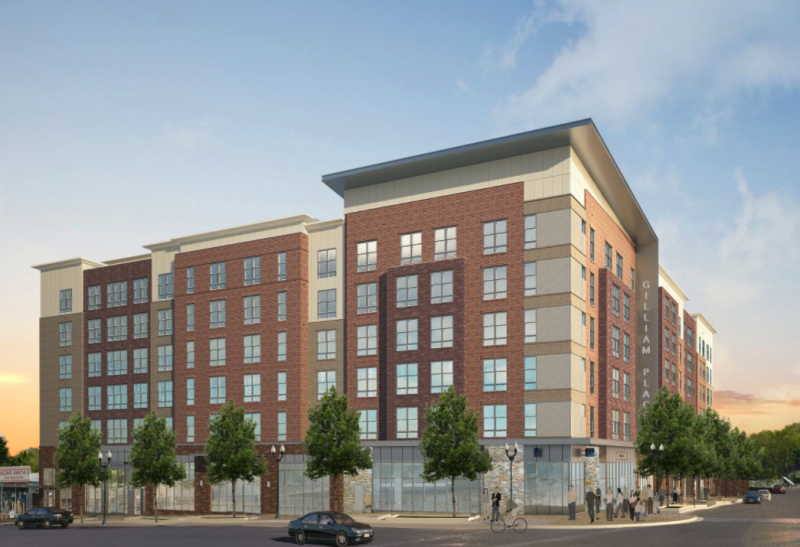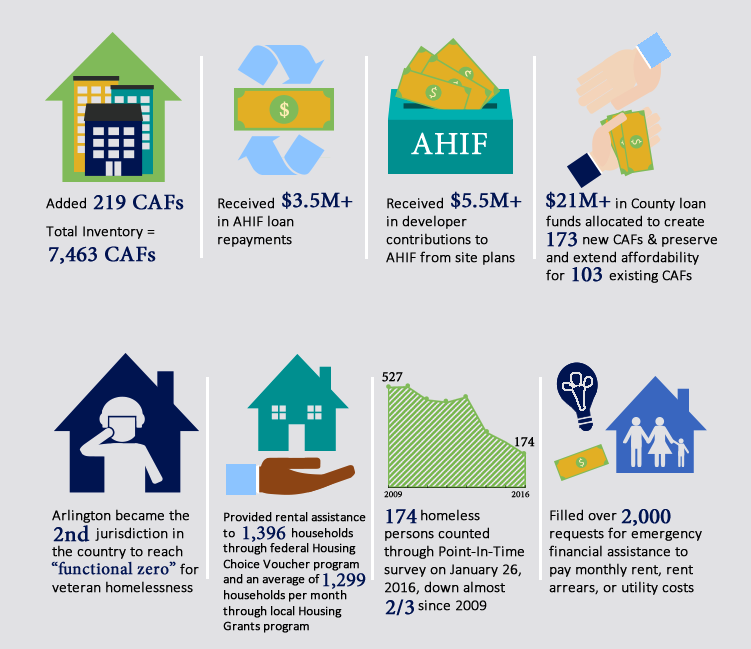Thanks to good planning, Arlington is building over 200 new affordable housing units

A rendering of Gilliam Place, which will add 173 new units of affordable housing along Columbia Pike. Image by KGD Architecture used with permission.
Arlington has set ambitious goals to tackle housing affordability, in part by making it easier for developers to build affordable housing in the first place. According to a recent report, Arlington made plans for new affordable units and brought its number of homeless residents down last year even as rents and housing costs went up.
At the beginning of last year, Arlington got the ball rolling on its Affordable Housing Master Plan. The plan aims to increase the supply of affordable housing in Arlington to 17.7% by 2040, make sure at-risk groups like the elderly and people with disabilities have access to affordable housing, and keep affordable housing environmentally friendly and close to public transit.
A report from Arlington’s Department of Community Planning, Housing, and Development says the effort is off to a good start.
Over the past year, Arlington approved 219 units guaranteed to stay affordable for the next 30 to 60 years. In most cases, the rent for these committed affordable units (CAFs) are affordable for families making less than 60% of the area median income. These new units bring the total number of CAFs in Arlington to 7,463.
Image by Arlington County.
The biggest source of these new affordable apartments is Gilliam Place, which will bring 173 affordable units to the intersection of Columbia Pike and South Lincoln Street. The project will also make good on Arlington’s commitment to building affordable housing near transit — Metro’s route 16 buses run up and down the road frequently— and amenities like employers and stores—the ground floor will provide almost 9,000 square feet for stores and community space.
Developments like Gilliam Place are possible thanks to the Arlington Housing Investment Fund (AHIF), which gives low-interest loans to developers that build affordable housing. This is Arlington’s version of DC’s Affordable Housing Trust Fund, a pot of money used to build affordable housing for low-income and extremely low-income residents. The main difference is that Arlington’s funding comes largely from allocations and contributions from developers participating in the program, while DC’s funding comes largely from a tax property owners pay the city whenever they sell a building or piece of land.
Last year, Arlington County approved projects that will add 173 committed affordable units at Gilliam Place and help make 103 more units affordable thanks to over $21 million in loan funds allocated to AHIF. It also received $3.5 million in loan repayments and $5.5 million in contributions from developers.
It’s no secret that the Washington region is facing an immediate shortage of affordable housing. Arlington County’s progress on getting more people into more affordable homes is good news.
